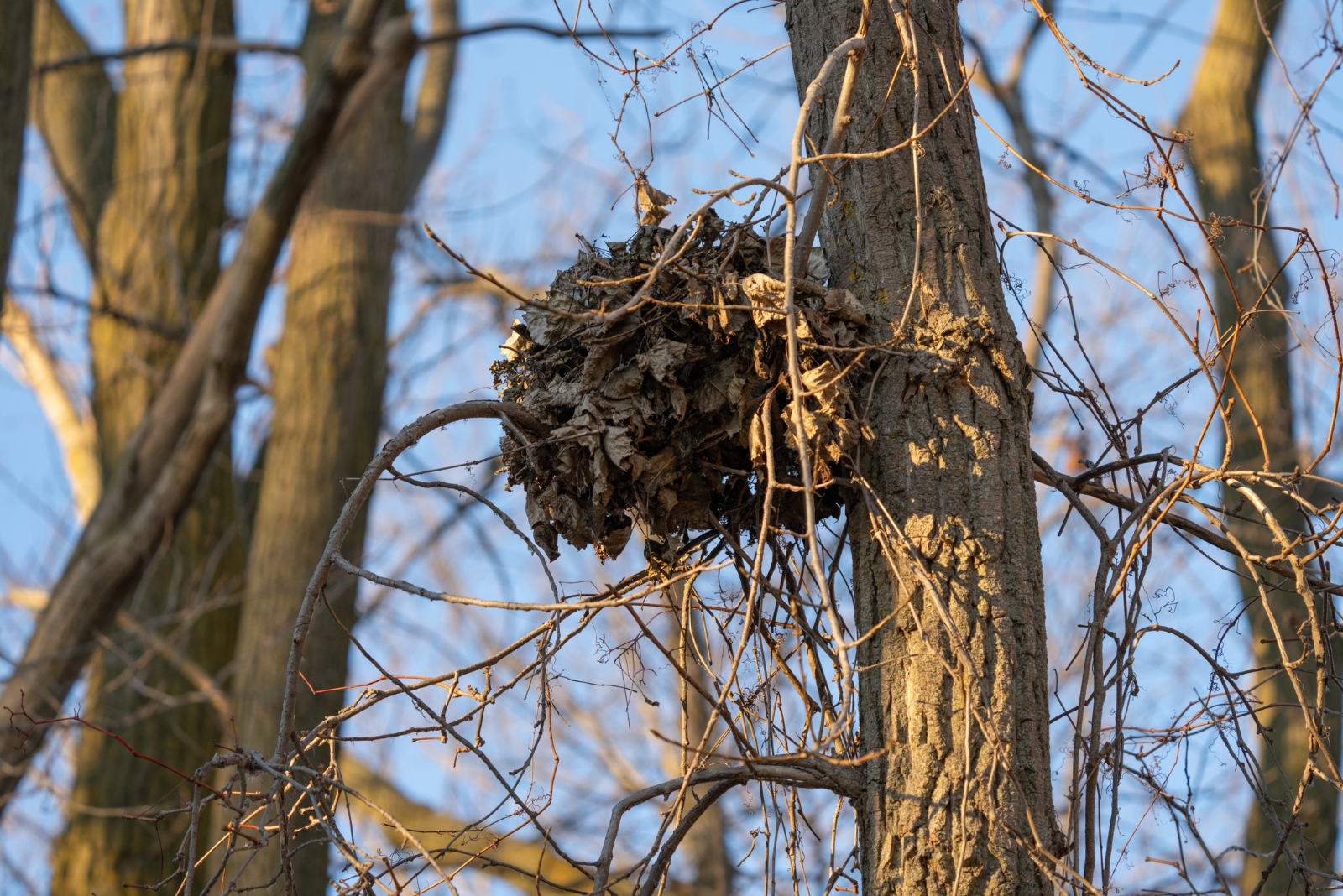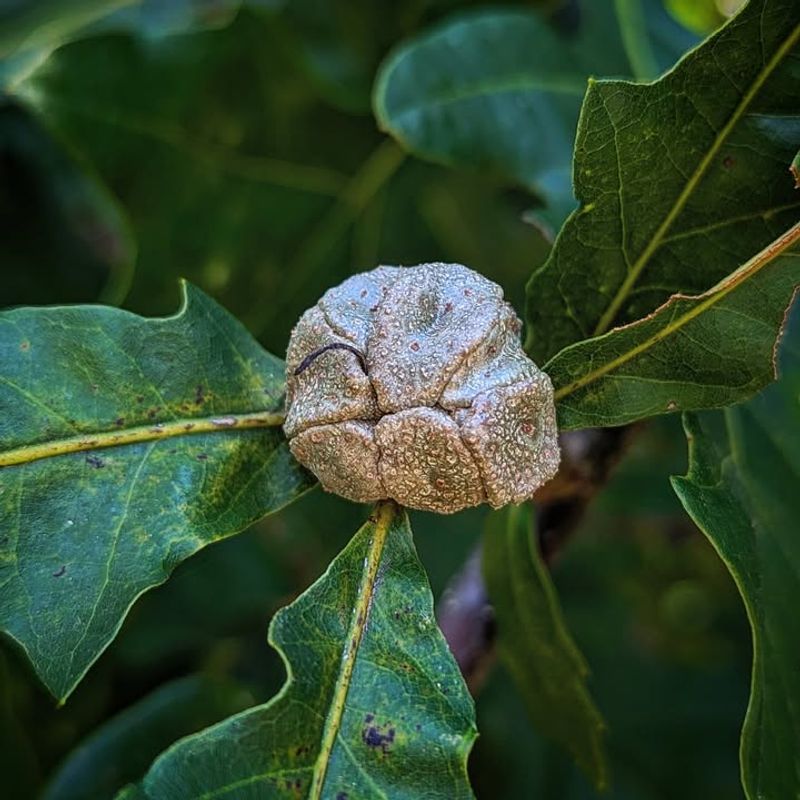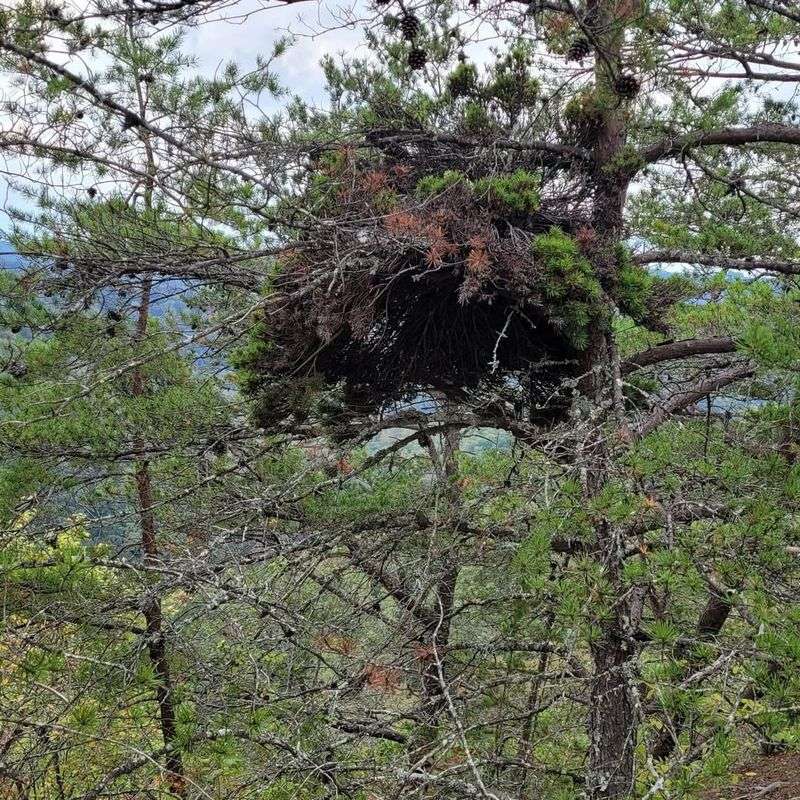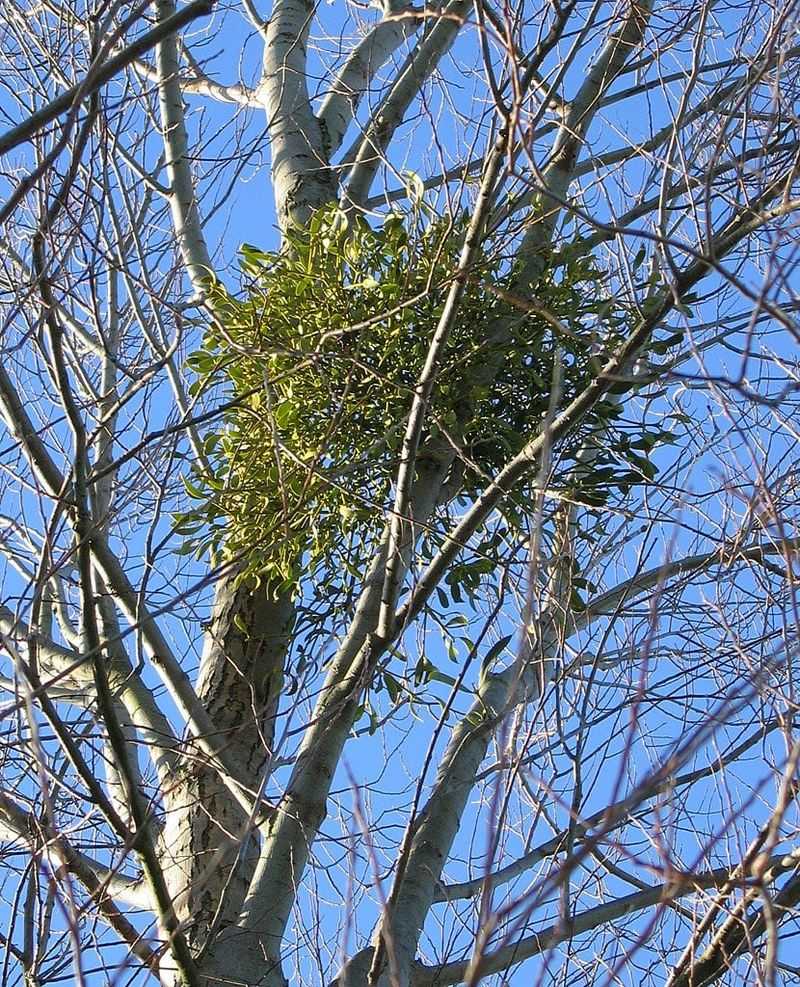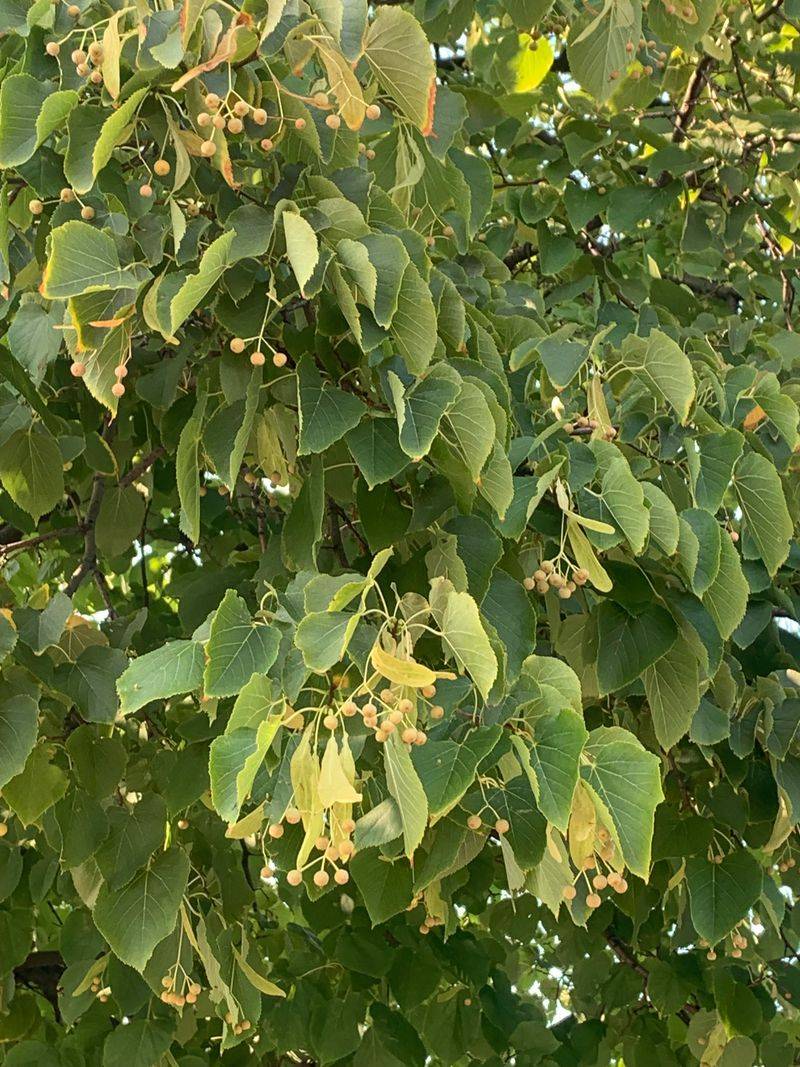When I first spotted a ball of leaves high in a Kentucky tree, I assumed it was a nest too. Turns out, nature can be a little tricky, and not everything is what it seems.
Learning the difference can save you from unnecessary worry. Once you know what to look for, your backyard observations get a whole lot more interesting.
1. It Could Be a Squirrel’s Drey
Squirrels are master builders throughout Kentucky, and their homes are called dreys. Unlike bird nests, dreys are larger, messier, and packed with layers of leaves, twigs, and moss for insulation.
Gray squirrels especially love constructing these cozy leaf balls high in oak and hickory trees. During winter months, you’ll spot more of them since the trees lose their camouflage.
Next time you’re hiking through Kentucky forests, look closely at that leaf ball—it might have a bushy-tailed resident inside staying warm!
2. Wasps Build Paper Nests That Look Leafy
Bald-faced hornets create impressive paper nests that can fool anyone from a distance. These insects chew wood fibers and mix them with saliva to form a papery material that weathers to a brownish-gray color.
By late fall in Kentucky, abandoned hornet nests hang like leaf clusters in trees. They’re actually quite safe to observe once the colony dies off in winter.
The intricate construction rivals any bird’s work, proving that sometimes nature’s smallest architects create the biggest surprises in Kentucky’s woodlands.
3. Leaf Galls Are Nature’s Weird Growth
Ever heard of plant tumors? Leaf galls form when tiny insects or mites inject chemicals into tree tissue, causing abnormal growth that looks like bunched-up leaves.
Oak trees across Kentucky commonly develop these strange formations. Gall wasps are usually the culprits, laying eggs that trigger the tree’s defensive response.
While they might seem harmful, most galls don’t seriously damage healthy trees. Kentucky’s oaks have been dealing with these peculiar growths for centuries, and they continue thriving despite their bumpy passengers.
4. Witches’ Broom Disease Creates Clusters
Witches’ broom sounds like something from a fairy tale, but it’s actually a plant disease caused by fungi, insects, or viruses. Infected branches grow abnormally dense, creating tight clusters that resemble leaf nests.
Kentucky’s hackberry trees frequently develop these peculiar growths. The bunched branches sprout extra leaves and twigs in chaotic patterns.
While witches’ broom looks alarming, it rarely kills the entire tree. Many Kentucky trees live for decades with these strange formations, adding character to the landscape and puzzling curious observers.
5. Mistletoe Bunches Mimic Leafy Nests
That romantic holiday plant actually grows as a parasite on Kentucky trees year-round. Mistletoe clumps form dense, rounded masses that stay green even when host trees go dormant.
Oak, elm, and maple trees throughout Kentucky often host these leafy imposters. From below, they perfectly mimic the size and shape of large nests.
Unlike true nests, mistletoe stays vibrant through winter. Kentucky’s older trees sometimes carry multiple clumps, creating a polka-dot effect against bare winter branches that’s both beautiful and bizarre.
6. Wind-Trapped Debris Forms Accidental Clusters
Sometimes Mother Nature just gets messy. Strong Kentucky winds blow loose leaves into tree forks and branch crotches, where they get stuck and pile up over time.
No animals involved—just physics and coincidence creating convincing nest lookalikes. Storms are particularly good at wedging leaves into tight spots where they compress into solid-looking masses.
Kentucky’s fall winds make this especially common. By winter, these accidental leaf piles dry out and harden, becoming permanent fixtures until spring rains finally break them down.
7. Abandoned Bird Nests Get Leaf Makeovers
Okay, so maybe it was a nest once! But that was probably last spring. Birds abandon their nests after breeding season, and Kentucky’s autumn leaves quickly cover the original structure.
Leaves pile on top, blow inside, and completely transform the neat cup into a messy leaf ball. What started as a carefully woven home becomes nature’s recycling project.
By winter in Kentucky, you’d never recognize the original craftsmanship. The leaf-covered remains might host squirrels or insects, but the original feathered architects have long since moved on.

